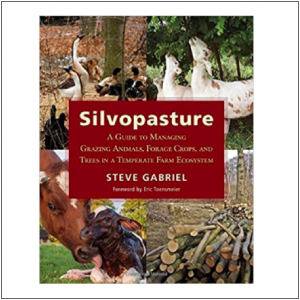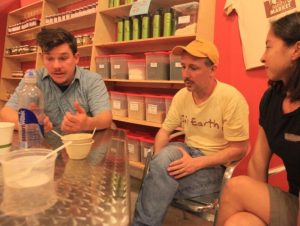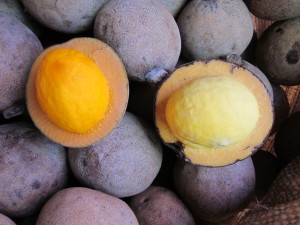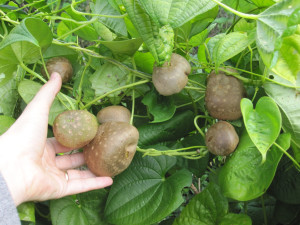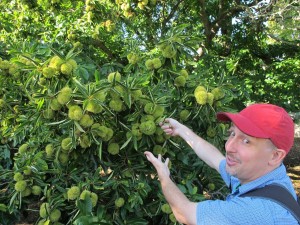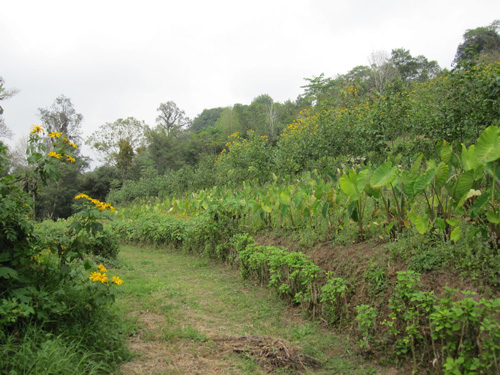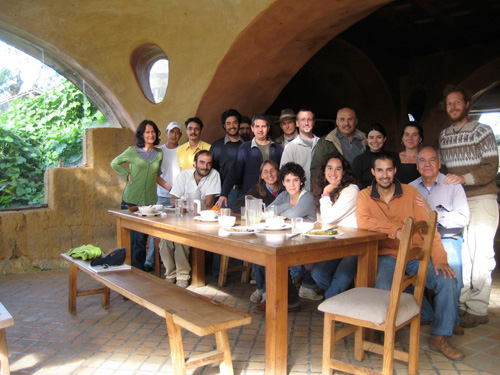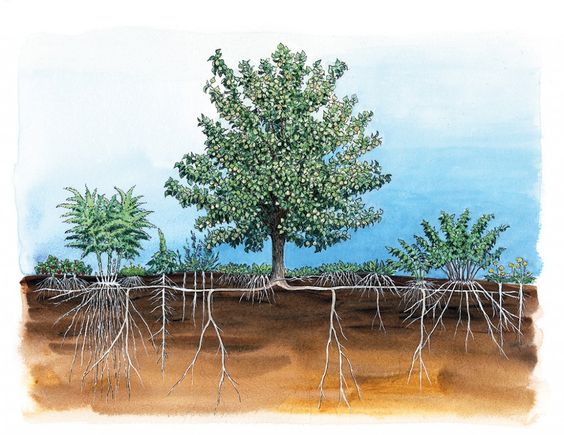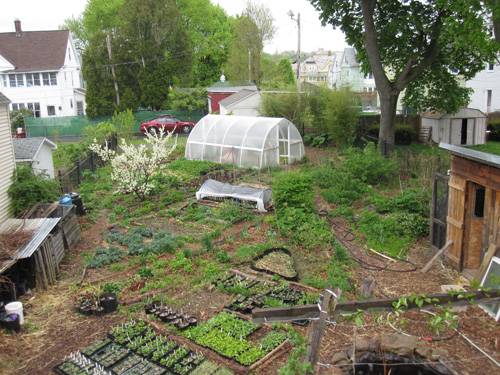This article is an excerpt from my recently published book Carbon Farming: A Global Toolkit of Perennial Crops and Regenerative Agriculture Practices for Climate Change Mitigation and Food Security, and was part of a series promoting my kickstarter campaign to raise funds with which I completed the book.
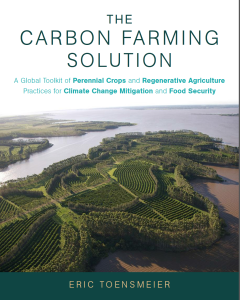
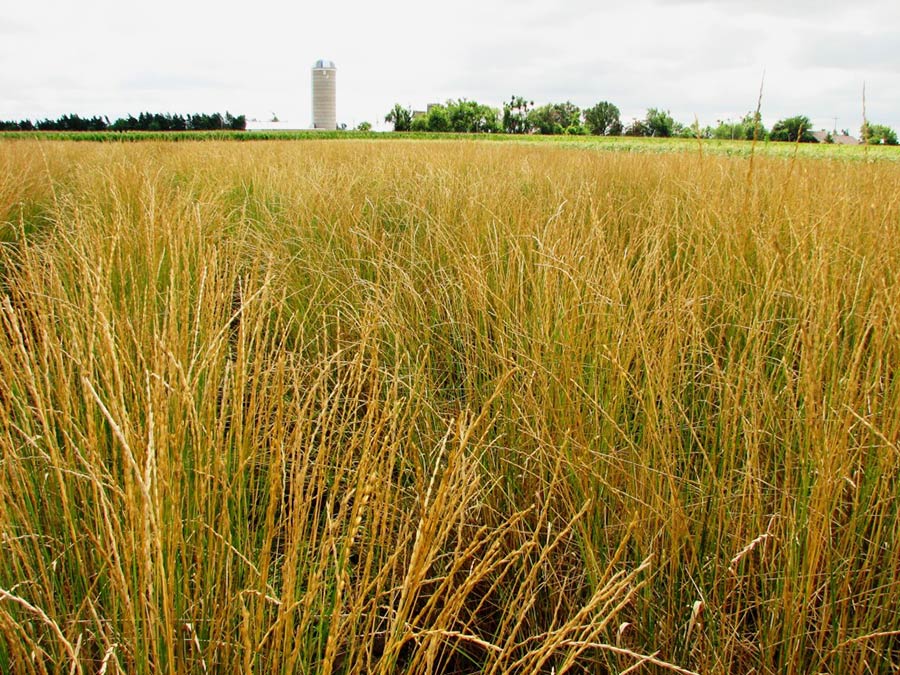
Imagine corn, wheat, or rice that comes back every year without saving seed, tilling, or replanting. Such crops could have a tremendous impact in restoring degraded farmland, rebuilding soil, and sequestering carbon while providing humanity with the staff of life.
The dream of perennial grains is getting tantalizingly closer. Today there is more hopeful news than there was even just a few years ago. In 2009 the First International Perennial Grain Breeding Workshop gathered researchers from all over the world. Land Institute research director Stan Cox proclaimed “we will look back on this workshop as the international launching of the perennial grain revolution.”
Perennial grains include cereals (grass seeds), legumes (dry beans), and oilseeds. In this article I’m focusing just on what’s happening with perennial grass seeds, though in the book I’ll be addressing all three categories and many more.
When compared with other perennial staple crops, perennial cereals have their pros and cons. Their big advantage is that they are basically familiar. People already know how to harvest, process, cook, and eat them. Existing equipment and infrastructure needs few if any changes to handle them. There are perennial cereals under development for almost every climate, from the northern plains to equatorial highlands to salty tropical delta farmland.
Unfortunately perennial grains are still a decade or more in the future, though thanks to the visionary work of the Land Institute and others, we are already decades closer to achieving that goal. There are a number of breeding challenges, whether one seeks to “perennialize” existing annual crops or domesticate wild perennials.
My own attempts to grow perennial grains here in Massachusetts have all failed. Perennial selections of wheat, rye, corn, sorghum, and Agrotriticum were all either winterkilled or proved to be annuals. I will be giving it a try again this year with a perennial wheat from Oikos Tree Crops.
Fast-tracking perennial grain development should be a high priority for use of climate change funds and efforts. They are within our reach, and researchers have a road map to achieving this remarkable goal. My thanks to the network of NGOs, Universities, governments, and backyard breeders who are making it happen. Funding may be the biggest obstacle between us and long-lived, soil-protecting, climate-stabilizing versions of the familiar crops we depend on today. A primary aim of my forthcoming book is to mobilize much greater support for development of perennial crops and production systems.
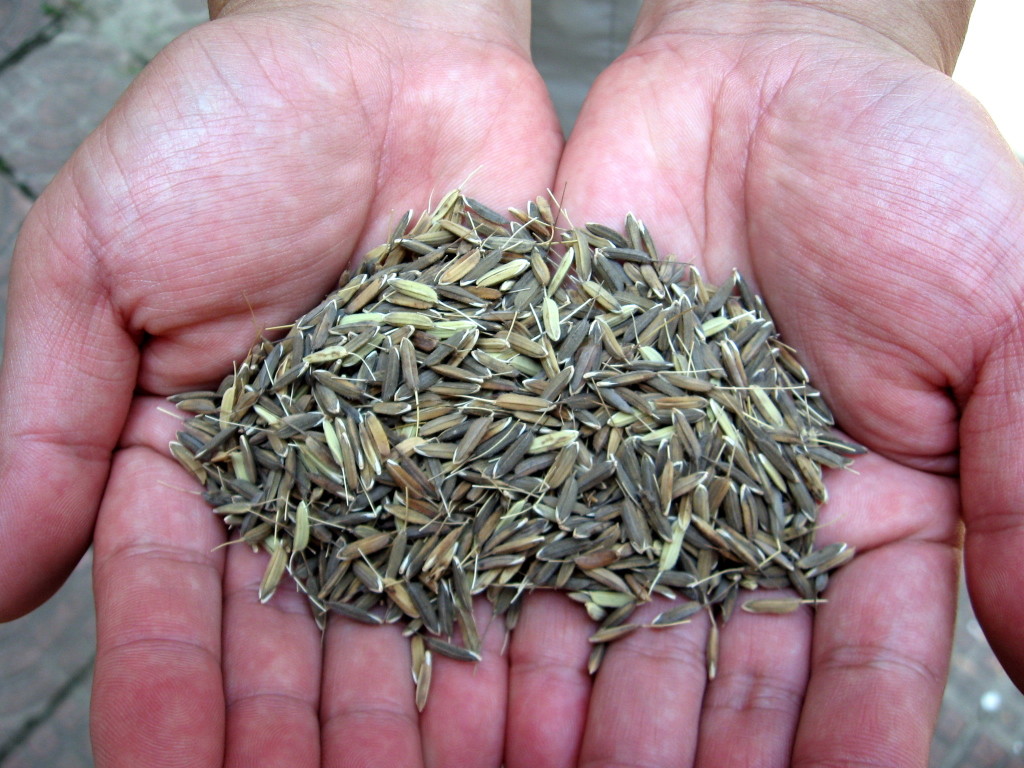
MAJOR WORLD CEREALS AND A PROMISING NEW GRAIN
Corn or Maize (Zea mays) is one of the most important staple crops on the planet. Perennial corn could slow or reverse the degradation of sloping lands around the world that are inappropriately used to grow annual maize. Scientists and backyard breeders have been working toward this goal for many years, and have made some limited progress. Diploid perennial teosinte (Z. diploperennis) is a wild relative which is crossable with annual corn. Several other wild corn relatives have recently been found by scientists. Maize can also be crossed with more distantly related hardy perennials including Eastern gammagrass (Tripsacum dactyloides) and the related dwarf Fakahatchee grass (T. floridanum).
The Land Institute has made substantial progress towards developing perennial corn. Their breeders report that with sufficient funding a perennial corn could be ready for field tests in as little as ten years. One challenge is that the perennial rhizomes that overwinter the plants are not cold-hardy, so their breeding is focused on deeper rhizomes that survive below the frost line. Of course this consideration is not important in the tropics where millions of people rely on corn as a staple.
Recently the US Department of Agriculture has begun to show interest in perennial corn breeding. If they were to dedicate a tiny fraction of their budget to this effort, great progress could be made.
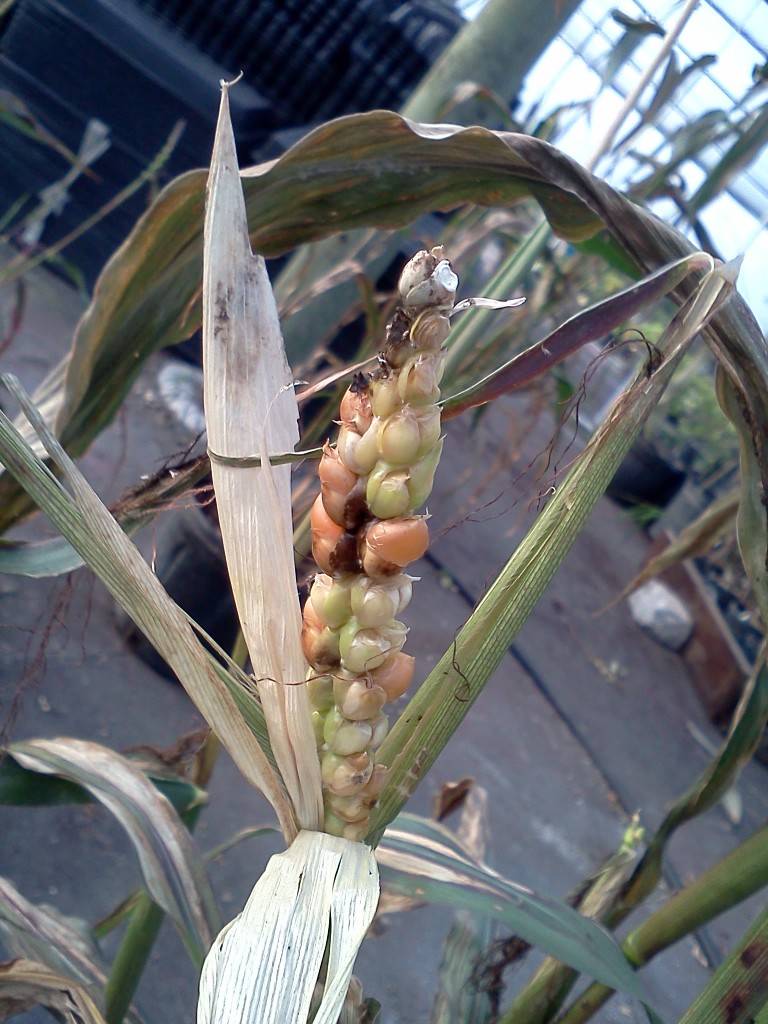
Nipa (Distichlis palmeri) is a perennial salt-tolerant grass of the Sonoran desert deltas. The flavor of its grain is apparently excellent. Once a staple of the Cocopa people, wild populations of nipa have been greatly reduced due to dams and other watershed disruptions. Wild patches of nipa have been estimated to yield 1.25 tons per hectare, making this one of the most promising perennial grains on the planet. As a C4 grass it is particularly efficient at photosynthesis.
Dr. Richard Felger, a researcher associated with the University of Arizona herbarium and the Sky Island Alliance, has been researching the potential of nipa as a salt-tolerant perennial grain for decades. Though there were some efforts to commercialize the crop too early by other researchers, Felger feels that it will become a major world crop, comparable to short grain rice in grain size and flavor.
Nipa tolerates salty conditions including irrigation with saltwater, and can handle wet conditions. In the wild, the saltmarshes it grows in are inundated twice daily by tidal seawater. It does not, however, require salt or waterlogging. As unsustainable irrigation practices and sea level rise result in increasing salinization of coastal plain farmlands, nipa could become prominent in regions like the Colorado, Ganges, Indus, Murray, and Nile deltas. It is adapted to tropical and subtropical conditions, and prospects for crossing it with the cold-hardy D. spicata are not promising.
Nipa is still undomesticated, and poses several challenges. Roughly half of plants are seedless males. It also appears to take several years after planting until full yields are achieved.
This perennial grain, already a staple for ages, has great promise for salty tropical areas and beyond. Nipa development should be a high priority to agencies and individuals concerned with food security, salinization, and climate change. Perhaps it may also offer an opportunity to develop productive revegetation of barrier islands, to provide protection to coastal areas from extreme weather events.
Rice (Oryza sativa). Rice has several perennial relatives, one an African perennial rice and the other actually a strain of the wild ancestor of annual rice. Under some conditions, some annual rice plants will “rattoon” (re-sprout) for several years. Perennial rice breeding work was carried out at the International Rice Research Institute in the Philippines in the 1990s, and was picked up by the Yunnan Academy of Agricultural Sciences in Kunming, China in 2007. Perennial rice breeding is very challenging and many factors need to be overcome before field testable material is available. The current focus is on replacing annual upland rice, which is grown on steep slopes, as opposed to irrigated paddy rice, which is grown in terraces or level fields. Pest and disease control are challenges in perennial rice as crop rotation is not an option.
The Land Institute reports that Yunnan Academy breeder Hu Fengyi has lines of rice that have produced grain for three years in a row, with yields competitive with annual rice. This is very promising news, as the prospect of perennial rice could have tremendous impact in tropical and subtropical areas of the world.
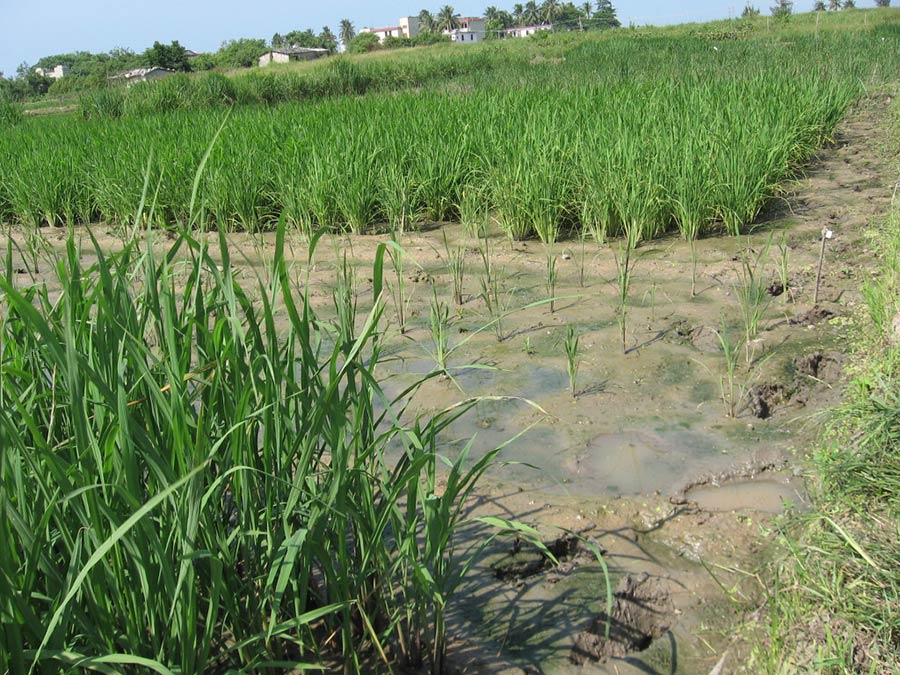
Rye (Secale cereale) is one of the perennial cereals that is closest to commercial viability. Annual rye has been crossed with a wild rye (S. montanum) and several varieties have been developed, including “Permontra” and “ACE-1”. In a recent study perennial ryes yielded 73% as well as their annual counterparts in years one and two. Not enough plants came back for a third year to make further measurement possible. Annual rye itself yields quite a bit lower than annual wheat. Nonetheless, we are probably closer to seeing perennial rye in production on real farms than most other global cereals.
Sorghum (Sorghum bicolor) is weakly perennial in the tropics and “rattoons” or re-sprouts for several years in ideal conditions. Perennial sorghum breeding at the Land Institute has focused on crosses with the perennial weed Johnsongrass (S. halipense). Like corn, there are challenges in overwintering tender rhizomes, which would not be an issue in the tropics. Perennial sorghum is farther along than most of the other perennial versions of major grains but is not yet ready for prime time. Perennial sorghum could be bred not just for grain but also for sweet syrup, which was once made from the stalks across the American Midwest. Sorghum is very versatile in terms of climates to which it is suited, but it is particularly appropriate to dry regions where it can outperform corn.
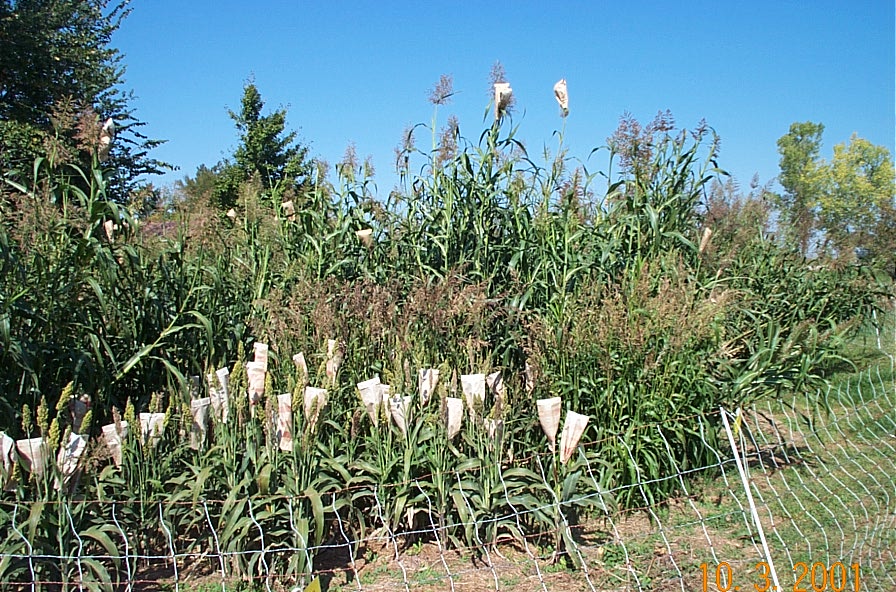
Wheat (Triticum aestivum). Perennial wheat breeding efforts began in the Soviet Union almost one hundred years ago. Only with recently developed techniques is perennial wheat breeding beginning to show results. Perennial wheats are typically crossed with wheatgrass (Thinopyron) species.
Several universities are working alongside the Land Institute on perennial wheat breeding including Washington State. In one Washington State study, some perennial wheat varieties yielded 93% as well as annual wheat the first year – most impressive. In a more recent study, perennial forms yielded 50% as well as annuals, in both the first and second years. Most of the plants died after their second harvest.
The Land Institute has had no success in perennial wheat survival in Kanasas (nor have I in Massachusetts). An Australian economic study has shown that perennial wheats could be economically viable if they yielded just 40% as well as annual wheat, but provided good fodder for several years after for grazing sheep. It seems that even this relatively low bar has not yet been cleared by perennial wheat, but breeding work continues.
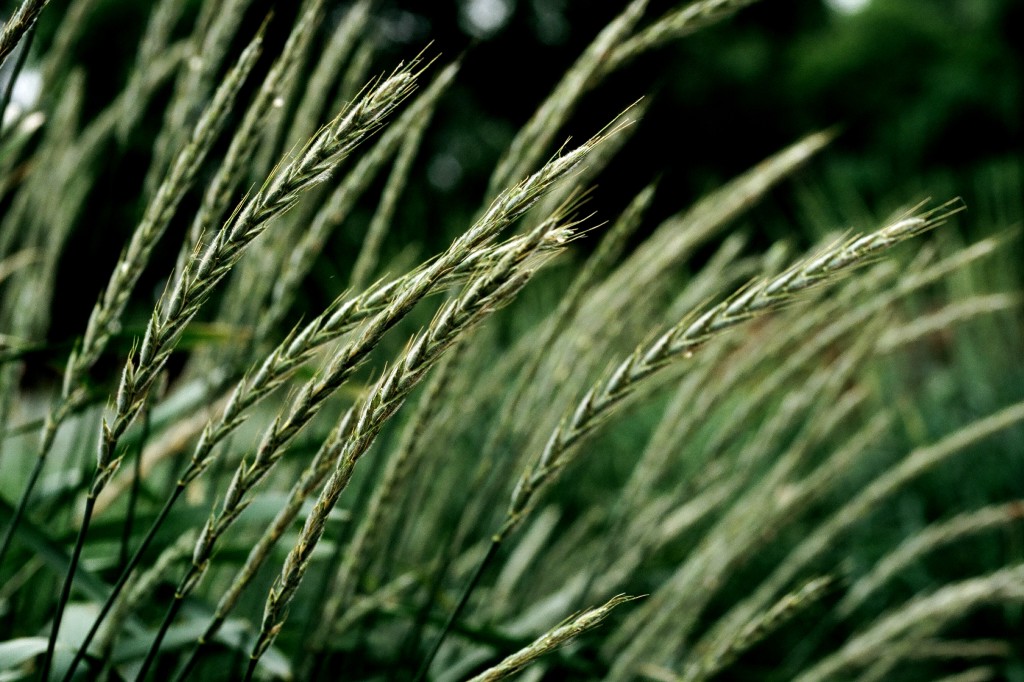
Additional Perennial Grains Worth Exploring
Barley (Hordeum vulgare) is adapted to very cold and short-season environments. The annual form has been crossed with a wild perennial (H. jubatum), probably to impart improved vigor or disease resistance. Researchers in Scandinavia, northern Canada, and Siberia might turn their attention to the potential of perennial barley for their regions.
Indian Ricegrass. This perennial North American native (Oryzopsis hymenoides) was a major staple to indigenous peoples of the west. Discovery of a non-shattering clone allows it to be grown today on a commercial scale in Montana, producing a specialty gluten-free flour marketed as “Montina”. High prices make up for low yields, and about 3,000 acres are in production. Little breeding work has been done of this remarkably drought- and cold-tolerant perennial grain.
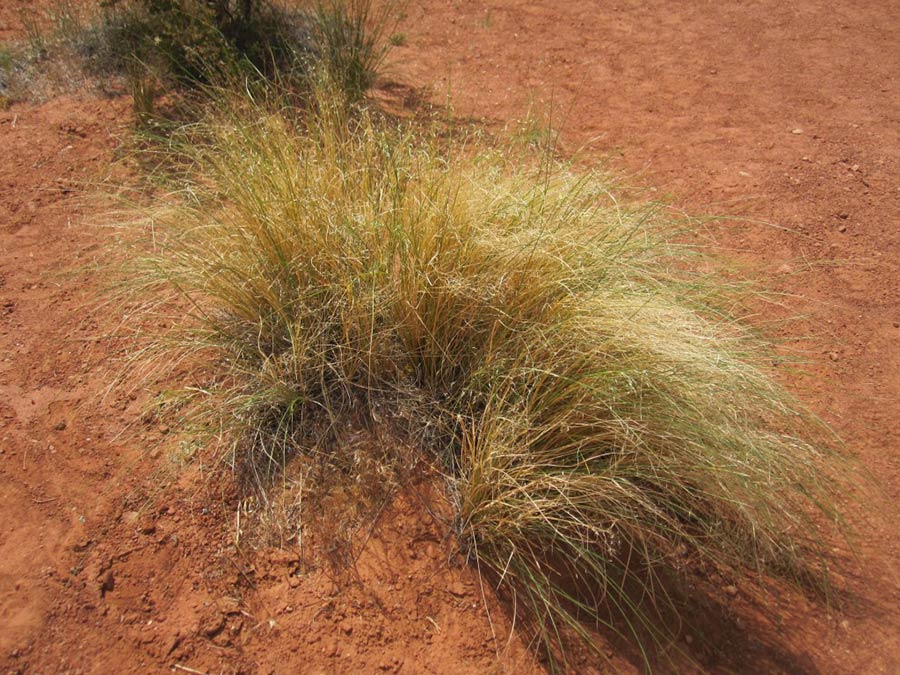
Intermediate Wheatgrass (Thinopyrum intermedium). The Land Institute has been working for several decades to domesticate this perennial wild grain. They have had relatively rapid success, and intermediate wheatgrass is currently undergoing a 30-acre field trial. The research fields are burned annually to control weeds, and apparently the crop can also be grazed to provide a non-seed yield. Production is still low, though researchers aim to see it reach one ton per acre. Thinopyrum species are also used as the perennial parent in attempts to develop perennial wheat.
Job’s Tears (Coix lacryma-jobi). Wild Job’s tears is a perennial from South and Southeast Asia. The seeds of the wild forms (var. stenocarpa and var. monilifer) have thick, hard shells that are often used as beads. These forms are grown around the world as ornamentals, and have naturalized widely. Though they have edible seeds, the shells make these forms impractical for use as food. Farmers in India domesticated an annual or mostly annual form with thin, soft shells (var. ma-yuen) between 3-4,000 years ago, which by 2,000 years ago was being grown in China. Before the arrival of corn, Job’s tears was an important grain in subtropical Asian highlands. Annual Job’s tears yields a respectable 2-3.5 tons per acre, and tolerates acid, poor, and waterlogged soils. Crossing annual grain types with perennial forms could result in a new perennial grain for the tropics and subtropics, including highland areas.

Markouba Grass, or Afezu (Panicum turgidum) is a wild perennial grass, ranging from the heart of the Sahara desert through Pakistan. It grows in areas with as little as 25mm (1”) of precipitation, spreading by stolons to stabilize sand dunes. Markouba grains are an important staple in the Sahara. Efforts at domesticating this species could serve the dual functions of feeding people in very arid tropical areas and reversing desertification. It might be crossed with proso millet (P. miliaceum), an important annual world grain.
Oats (Avena sativa) are important both as livestock fodder and in oatmeal breakfasts in cold climates around the world. Oats have been hybridized with the perennial A. macrostachya, though not for the purpose of creating perennial oats. Who will rise to this challenge?
Pearl Millet (Pennisetum glaucum) is an important world grain, thriving in arid environments and poor soils. It has been crossed with the (very weedy) perennial elephant grass P. purpureum. A perennial millet could be significant in Africa and India where millions of people rely on millet for survival.
Woollybutt Grass (Eragrostis eriopoda) is an Australian wild edible that has served as an important staple to indigenous people there for millennia. They are reported to have been the most important native grass seed, in part because of the ease of processing seeds, high yields, and holding on the plant for months. This species is now cultivated on a small scale by “bush tucker” (wild edibles) enthusiasts in Australia.
References and Further Reading
Cox et al. “Prospects for developing perennial grain crops” in Bioscience, 56: 649-659 (2006).
Duke, James. Handbook of Energy Crops, unpublished 1983, online at http://www.hort.purdue.edu/newcrop/duke_energy/dukeindex.html, accessed April 16 2013.
Glover et al. “Increased food and ecosystem security via perennial grains” in Science 328: 1638-1639 (2010).
Hayes, R.C. et al. “Perennial cereal crops: An initial evaluation of wheat derivatives”, in Field Crops Research 133: 68-89 (2012).
Jaikumar et al. “Agronomic assessment of perennial wheat and perennial rye as cereal crops” in Agronomy Journal, 104:1716-1726 (2012).
Low, Tim. Wild Food Plants of Australia, Angus & Robertson, 1991.
O’Barr, Scott. Alternative Crops for Drylands. Amaigabe Press, 2013.
National Research Council. Lost Crops of Africa Vol. I: Grains. National Academy Press, 1996.
Pearlstein, Felger et al… “Nipa (Distichlis palmeri): A perennial grain crop for saltwater irrigation” Journal of Arid Environmental 82 (2012) 60-70
Shim, Junghyun. “Perennial rice: Improving rice production for a sustainable upland ecosystem” in SABRAO Journal of Breeding and Genetics ,44 (2) 191-201, 2012.
Smith, Keith & Irene. Grow Your Own Bushfoods, New Holland Publishers, 1999.
Van den Bergh, M.H. & N. Iamsupasit, 1996. Coix lacryma-jobi L.[Internet] Record from Proseabase. Grubben, G.J.H. & Partohardjono, S. (Editors).
PROSEA (Plant Resources of South-East Asia) Foundation, Bogor, Indonesia. http://www.proseanet.org. Accessed from Internet: 16-Apr-2013

